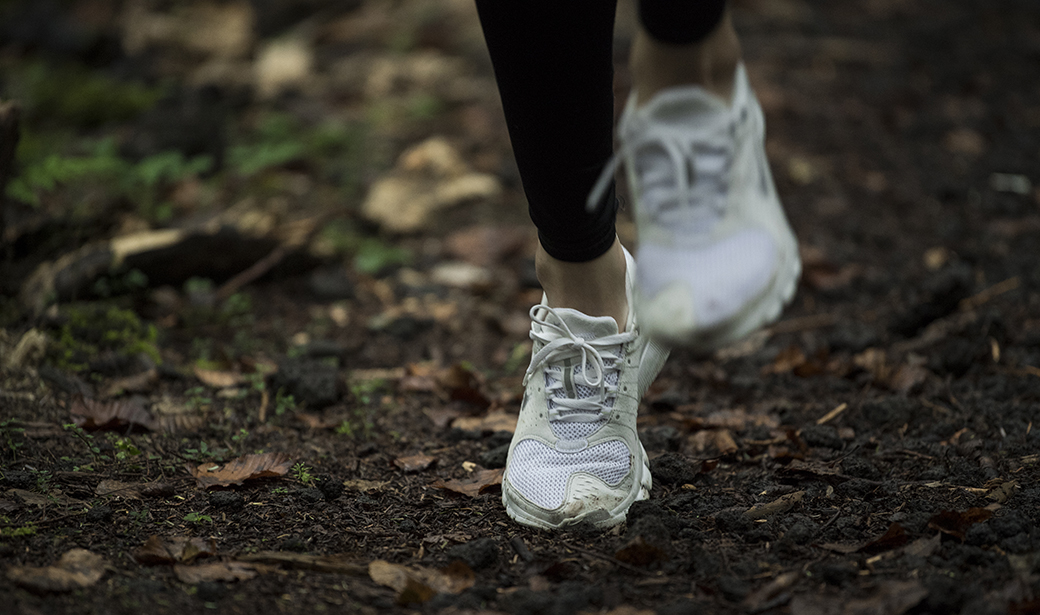If your junior high PE teacher told you to run laps “just because,” running might have always felt more like punishment than fun. Perhaps you never pictured yourself as a runner, but now that you’re no longer a schoolkid, maybe you should reconsider.
Running provides a host of benefits, such as strengthening your bones and muscles, improving your heart health and helping you maintain a healthy weight. If you’ve never run before or if you used to and want to resume the healthy habit, physical therapist Tony Turley has tips to get you ready.
Choose your shoes
The only really important piece of running gear is your shoes. (No, you don’t have to wear the thin short shorts.) Your running shoes should fit snugly in the heel and middle of the foot with room for your toes to move a little. Most shoe stores have running sections and will offer suggestions. Once you choose a pair that offers the support you need, take time to properly break them in before running. Go on a walk with them and wear them around your house. Replace your shoes after 300 to 500 miles, or about every six months.
Choose your location
Do you want to start inside on a treadmill, an indoor track or outdoors? If you’ve never run before, avoid jumping straight into difficult trails with a lot of rough terrain. Look for places that are less technical with small, gradual hills that prepare your body for harder workouts in the future. Even experienced runners need to ease into running on new surfaces.
Running inside can be a great option during the winter months. However, you still need to take precautions to do it safely. If you opt for a machine or treadmill, make sure you’re familiar with the settings to adjust speed or to safely stop if needed. Running on a treadmill can be rough on your joints, so it’s best to use a slight incline to mimic outdoor running — bonus points if you mimic rolling hills with your workout.
Warm up first
Before going straight into your run, give your body some time to warm up with simple exercises such as dynamic stretches — active movements where your muscles and joints go through a full range of motion. Get your blood flowing with light jogging in place and active movements. The hips are extremely important for running, so get them warm by doing lunges, side steps and leg swings. These movements help fire your glutes to pull you through your run.
Get the most from your run
While you run, pay attention to your footing to avoid tripping or rolling an ankle. You can work on stabilization exercises to help improve your running mechanics. Try balancing on one foot, closing your eyes and turning your head slowly. This can be done every day after your run, or you can dedicate a full workout to such exercises. Pace yourself. Remember, you don’t have to take off in a sprint at the beginning. Ease yourself into the act of running, and gradually you’ll find your stride. Give yourself small goals that you can hit as you get started and work up to more difficult goals. For example, you can run five minutes and then walk two minutes until you reach a total of 20 minutes. Eventually, you’ll get to a place where you can run 20 minutes without walking.
Post-run stretch
The best time to stretch is right after your run, when your muscles are fully warm. You never want to stretch while your muscles are cold because that can lead to injury. Focus on hamstrings, calf muscles and hip flexors, because that’s where most runners feel tightness. Hold each stretch for at least 30 seconds, but it’s even better to hold for 60 seconds. Avoid bouncing in each stretch. Keep your muscles relaxed for the best results and to avoid injury.
Injuries and pain
It’s normal to feel aches and pains while running. You’ll probably feel pretty sore and tight for the first few weeks. However, when that pain becomes abnormal, you need to listen to your body. Sharp pain that hurts with each step is a sign you should stop running and get help. Give your body some rest to avoid aggravating the injury. If the pain persists, it could be something more serious that requires medical attention. The sooner you get treatment, the sooner you’ll get better and back on the trails.



